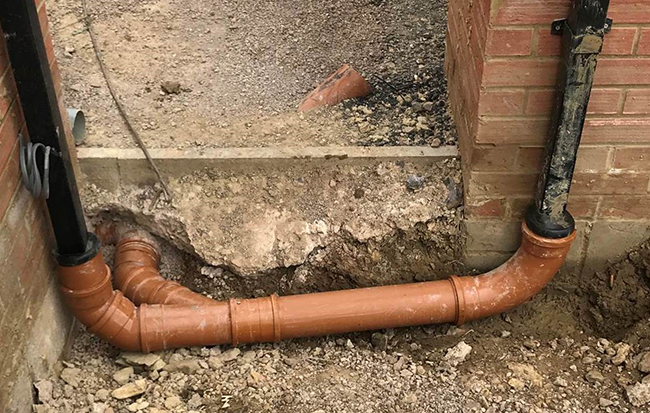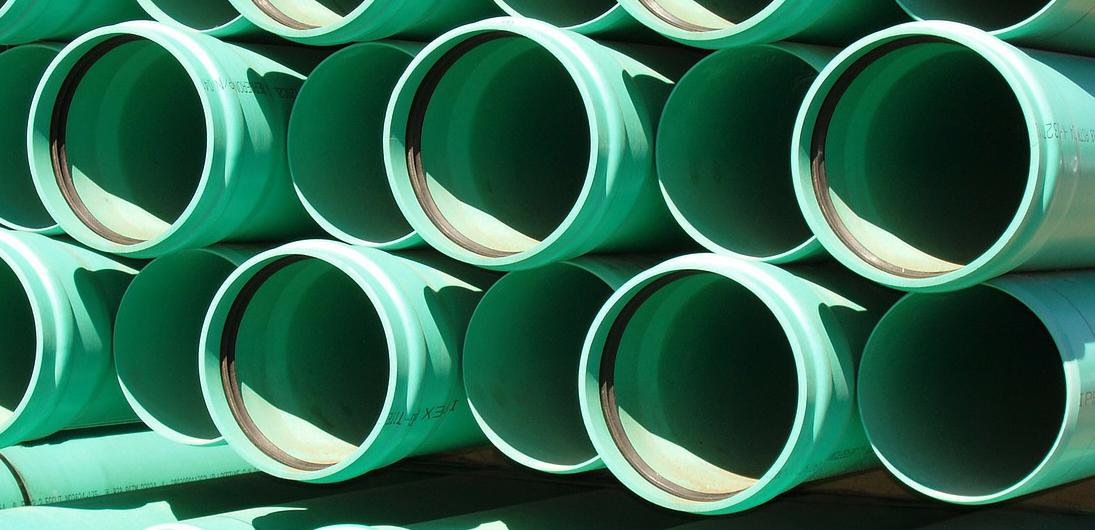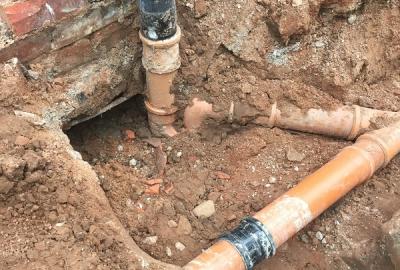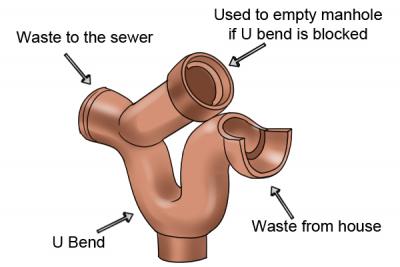Drainage pipes: What to do when water won’t go round the bend
A photo sent in recently by one of our building control surveyors highlighted a common problem found when the right drainage pipe fittings aren’t to hand on site and deadlines need the work doing right away:

In this instance, it’s surface water drainage from a house and detached garage that needed finishing so that tarmac could be laid to the drive ready for handover. They didn’t have an inspection chamber so just installed a rodding eye to provide access to the main drain running to the left.
Regulation H3 requires that ‘adequate provision should be made for rainwater to be carried from the roof of the building’.
The requirement can be satisfied by following guidance within Approved Document H 1 2.46:
Sufficient and suitable access points should be provided for clearing blockages from drain runs which cannot be reached by any other means. The siting, spacing and type of access point will depend on the layout, depth and size of the runs.
The problem with the layout shown is that access can’t be provided to the section branched off the main run.
The equal branch used the wrong way round means that leaf and silt debris is likely to collect within the section to the left of the branch and cause future problems.
The concrete surround to the edging was also laid directly onto the drain with very little cover.
The solution was to use roddable gullies to the downpipes.
The downpipe to the left was then connected into the existing branch on the main run from the rodding eye with a second branch (back to front branch reused), before this connection picking up the downpipe to the right.
This offered access from both downpipes into the main run, with the rodding eye providing access to the main run down to an inspection chamber at a change in direction beyond the garage.
Concrete was cleared over the drain and all backfilled with pea gravel allowing tarmac to be laid, albeit later than planned.
Further information
Visit the Polypipe page for details of drainage courses, registered details and drainage-related blog posts.
Or read How to get your drainage right and How to get it right: Above ground drainage.
And last but not least, Oops...don't do this (or, when not to use 'P' traps)
Sign up to the building bulletin newsletter
Over 48,000 construction professionals have already signed up for the LABC Building Bulletin.
Join them and receive useful tips, practical technical information and industry news by email once every 6 weeks.
Subscribe to the Building Bulletin




Comments
Add new comment